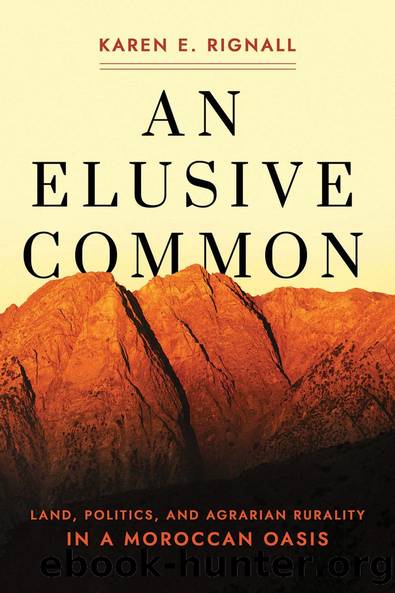An Elusive Common by Karen E. Rignall

Author:Karen E. Rignall [Rignall, Karen E.]
Language: eng
Format: epub
Tags: Social Science, Human Geography, Agriculture & Food, Political Science, Public Policy, Agriculture & Food Policy
ISBN: 9781501756146
Google: ciz9DwAAQBAJ
Publisher: Cornell University Press
Published: 2021-07-15T03:30:18+00:00
Conclusion
The state had subsumed collective lands for nearly a century, and the confusing juridical structure had little legitimacy for people struggling for access to land, if they understood the law at all. They simply saw outsiders, state or nonstate actors, appropriating their lands when it suited them. That does not mean that communal tenure regimes had no legitimacy. Even if some of the traditional practices associated with the commons declined or even disappeared in some places, they sustained their importance or were modified to suit new realities in others. Such practices offered a pragmatic vision of how a commons might work rather than a romanticized moral economy untethered from the reality of peopleâs lives. The participants in land divisions whom I met may have wanted to dismantle certain elements of collective lands, but they did so with the aim of reimagining commoning, not dissolving it. Land mobilizations therefore undergirded ethical claims that belied a straightforward interpretation of individualized land tenure as the atomization of communal life. Collective action to divide up lands could become the basis for a new ethical community based on the right to subsistence rather than a state-sanctioned tribal affiliation that encoded long-standing social hierarchies and allowed marginalized people little or no control in the disposition of their collective lands.
This underscores how the communal referent point for popular enclosure movements was definitely not a return to an idealized past of collective governance. As I did life histories, people emphasized how the oppression and poverty of the past were rooted in rigid inequalities, and that however difficult life was now, there was more freedom. They could move for work, for example, rather than suffer the burden of indentured labor. In responding to these histories of dispossession, mobilizing for land rights and the right to subsistence could open new avenues for the expression of communal affinities. Certainly, intra- and intercommunity tensions aboundedâaround land, other natural resources, political power and many other issuesâbut the fact that people enacting land division could speak of increased communal spirit encourages a reconsideration of how individual rights, communal identities, and land related to one another. When this latent commons surged to the surface of political life, it also offered insights into the communal dimensions of other, perhaps less visible changes, such as patient investments in new kinds of farming and the emergence of new ways of making a living. The next chapter uses this communal referent to frame an analysis of livelihood transformation as socioecological change, linking the new ways people began to make a living in the valley to the broader environmental politics of land-use change and customary natural resource management.
Download
This site does not store any files on its server. We only index and link to content provided by other sites. Please contact the content providers to delete copyright contents if any and email us, we'll remove relevant links or contents immediately.
The Secret History by Donna Tartt(18849)
The Social Justice Warrior Handbook by Lisa De Pasquale(12142)
Thirteen Reasons Why by Jay Asher(8796)
This Is How You Lose Her by Junot Diaz(6794)
Weapons of Math Destruction by Cathy O'Neil(6146)
Zero to One by Peter Thiel(5686)
Beartown by Fredrik Backman(5599)
The Myth of the Strong Leader by Archie Brown(5425)
The Fire Next Time by James Baldwin(5249)
How Democracies Die by Steven Levitsky & Daniel Ziblatt(5128)
Promise Me, Dad by Joe Biden(5087)
Stone's Rules by Roger Stone(5026)
A Higher Loyalty: Truth, Lies, and Leadership by James Comey(4845)
100 Deadly Skills by Clint Emerson(4840)
Rise and Kill First by Ronen Bergman(4704)
Secrecy World by Jake Bernstein(4646)
The David Icke Guide to the Global Conspiracy (and how to end it) by David Icke(4625)
The Farm by Tom Rob Smith(4437)
The Doomsday Machine by Daniel Ellsberg(4416)
